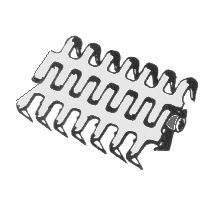Applications
P.I.W. (pounds per inch width)
Installation Method
Splicing Method
Pulley Diameter Range
Metals Available
Fastener Profile
Range
Roughness
You are trying to load a table of an unknown type. Probably you did not activate the addon which is required to use this table type.
Ordering Numbers
Each carton contains everything needed for 4 complete joints; 4 sets (joints) of lacing, 4 corrugated hinge pins and 1 installation gauge pin with clips.
You are trying to load a table of an unknown type. Probably you did not activate the addon which is required to use this table type.
You are trying to load a table of an unknown type. Probably you did not activate the addon which is required to use this table type.
You are trying to load a table of an unknown type. Probably you did not activate the addon which is required to use this table type.
You are trying to load a table of an unknown type. Probably you did not activate the addon which is required to use this table type.
You are trying to load a table of an unknown type. Probably you did not activate the addon which is required to use this table type.
You are trying to load a table of an unknown type. Probably you did not activate the addon which is required to use this table type.
You are trying to load a table of an unknown type. Probably you did not activate the addon which is required to use this table type.
You are trying to load a table of an unknown type. Probably you did not activate the addon which is required to use this table type.
You are trying to load a table of an unknown type. Probably you did not activate the addon which is required to use this table type.
You are trying to load a table of an unknown type. Probably you did not activate the addon which is required to use this table type.
You are trying to load a table of an unknown type. Probably you did not activate the addon which is required to use this table type.
You are trying to load a table of an unknown type. Probably you did not activate the addon which is required to use this table type.
Extra hinge pins are available in packs of ten in various lengths made from corrugated steel and corrugated stainless steel. Hinge pins of nylon-covered steel and nylon-covered stainless steel are available in rolls of 10, 100 and 500 feet.
For volume users and production applications, an Alligator Installation Tool is available that installs numbers 00, 1B, 7 and 15.

